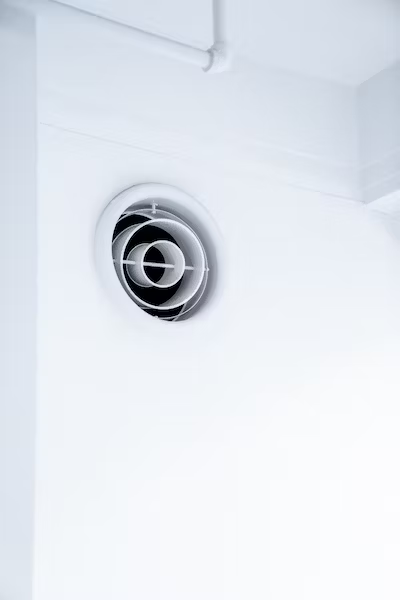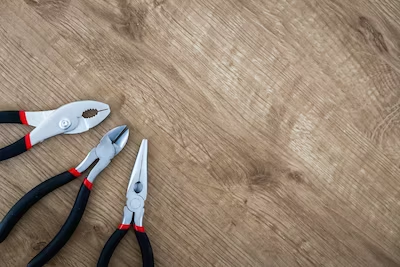29
Outcomes
- Understand the different types of inspections required for housing, such as pre-construction inspections, progress inspections, and final inspections.
- Explain the importance of regular maintenance in preserving the quality and functionality of housing.
- Identify the routine maintenance tasks and schedules needed for different housing components and systems.
Important Housing Inspections
In housing construction, various types of inspections are conducted at different stages to ensure compliance with safety standards, building codes, and project requirements. These inspections help to identify any deficiencies or non-compliance issues early on and ensure that the construction process progresses smoothly. Here are the different types of inspections commonly performed in housing construction:
- Pre-Construction Inspections: Pre-construction inspections are conducted before the construction process begins. These inspections typically involve a thorough review of the building plans, site conditions, and proposed construction methods. The purpose is to assess the feasibility of the project, identify any potential issues or risks, and ensure that the project meets all necessary regulatory requirements.During pre-construction inspections, inspectors evaluate factors such as the site layout, foundation plans, utility connections, environmental considerations, and accessibility requirements. They also verify that the project aligns with zoning and land use regulations, building codes, and other relevant standards.
- Foundation Inspections: Foundation inspections focus on the structural integrity and stability of the building’s foundation. Inspectors check the foundation excavation, reinforcing steel placement, formwork, and concrete pouring processes. They ensure that the foundation is properly constructed, level, and able to support the weight of the structure.During foundation inspections, inspectors also evaluate the installation of necessary drainage systems to prevent water infiltration and ensure proper site grading to avoid potential water accumulation issues.
- Framing Inspections: Framing inspections are conducted after the structural framework of the building is complete, including walls, floors, and roof structures. Inspectors examine the construction techniques, materials used, and connections to ensure compliance with building codes and structural requirements. They verify that the framing is done accurately, securely, and capable of supporting the building loads.
During framing inspections, inspectors check for proper installation of beams, columns, studs, floor joists, roof trusses, and other structural components. They also ensure that fire and soundproofing measures are in place as required. - Plumbing and Electrical Rough-In Inspections: Plumbing and electrical rough-in inspections are performed after the installation of plumbing and electrical systems but before they are concealed by finishes such as walls and ceilings. Inspectors review the layout, installation, and connections of plumbing pipes, fixtures, and electrical wiring to ensure compliance with safety codes and standards.
During these inspections, inspectors check for proper sizing, positioning, and support of plumbing pipes and fittings. They also verify that electrical systems are installed correctly, including wiring, outlets, switches, and circuit breakers. The purpose is to ensure that the systems are safe, functional, and in accordance with local regulations. - Progress Inspections: Progress inspections occur at various stages throughout the construction process to monitor the overall progress and quality of the work. These inspections ensure that the construction is proceeding according to the approved plans, permits, and applicable regulations.

During progress inspections, inspectors assess the completion of key construction milestones, such as the installation of insulation, wall coverings, roofing, and other critical systems. They also check for compliance with fire safety measures, accessibility standards, and other specific project requirements. - Final Inspections: Final inspections are the last step in the construction process, conducted before the building is occupied or put into use. Inspectors thoroughly examine all aspects of the building to ensure that it meets all safety, structural, and functional requirements.During final inspections, inspectors inspect the completed construction, including finishes, fixtures, systems, and overall compliance with building codes. They check for any remaining deficiencies, safety hazards, or areas that require rectification before issuing a certificate of occupancy or approval for the building’s use. It’s important to note that the specific requirements and regulations may vary depending on the jurisdiction and the type of housing project. Local building authorities or regulatory bodies provide guidelines for the inspection process and may require additional documentation or certifications. It is crucial to adhere to these requirements to ensure compliance with applicable laws and regulations.
Regular maintenance is essential for preserving the quality and functionality of housing in First Nations communities. By implementing routine maintenance tasks and schedules tailored to the community’s needs, the longevity and safety of housing structures can be maximized. Additionally, regular maintenance helps identify and address issues in a timely manner, preventing them from becoming more significant problems that could lead to costly repairs or compromised living conditions.
The specific maintenance tasks and schedules may vary depending on the components and systems within the housing. HVAC systems require regular filter replacements and professional maintenance to ensure optimal performance and indoor air quality. Plumbing systems need regular inspections to identify leaks and ensure a safe water supply. Electrical systems should be regularly tested to maintain safety, and roofs and gutters require periodic inspections and cleaning to prevent water damage.

Exterior and interior maintenance tasks include cleaning, inspection, and repair of siding, windows, doors, and other components. It is also important to address specific cultural or traditional elements within the housing structure during maintenance routines. Landscaping and yard maintenance should be adapted to the local climate and incorporate sustainable practices.
Engaging with community members and leaders is crucial to understanding their specific needs and incorporating traditional knowledge and practices into maintenance routines. By considering the unique cultural, environmental, and geographical factors of First Nations communities, maintenance efforts can align with their values and traditions while preserving the integrity of the housing structures.
Lastly, it is essential to stay informed about local regulations and guidelines provided by building authorities or regulatory bodies. Compliance with these requirements ensures that the maintenance process meets legal obligations and contributes to the overall safety and well-being of community members. By prioritizing regular maintenance, First Nations communities can sustain functional, comfortable, and safe housing for generations to come.
Maintenance Vs. Inspections
Inspections and maintenance are closely linked when it comes to ensuring the safety, functionality, and longevity of residential buildings. While inspections focus on assessing the condition and compliance of a building during the construction or post-construction phase, maintenance involves regular upkeep and repairs to prevent deterioration, address potential issues, and prolong the lifespan of the building. Here’s how inspections and maintenance are connected:
- Identification of Maintenance Needs
Inspections help identify maintenance needs by assessing the condition of various building components, systems, and materials. Inspectors may detect signs of wear and tear, damage, or non-compliance during inspections. These findings inform the maintenance requirements, allowing building owners or managers to address them promptly. - Preventive Maintenance
Inspections often highlight areas that require preventive maintenance measures. By identifying potential issues early on, such as leaks, cracks, or faulty equipment, preventive maintenance can be scheduled to mitigate further damage and prevent costly repairs. Regular inspections help establish maintenance schedules and ensure that maintenance tasks are performed proactively. - Compliance with Safety Standards
Inspections ensure that buildings comply with safety standards and regulations. Regular maintenance is necessary to sustain compliance over time. Maintenance activities may include testing and servicing fire safety systems, checking electrical systems, maintaining plumbing fixtures, and ensuring proper ventilation. By adhering to safety standards through regular maintenance, buildings can remain safe for occupants. - Timely Repairs
Inspections may uncover maintenance issues that require immediate repairs. These could include structural defects, malfunctioning systems, or damaged components. Addressing these issues promptly through maintenance and repairs helps prevent further deterioration, ensures the building remains habitable, and avoids potential safety hazards. - Maintenance Inspections
In addition to periodic inspections during construction or major renovations, maintenance inspections are conducted regularly to assess the condition of the building and its components. These inspections may focus on specific areas, such as roofing, plumbing, HVAC systems, or common areas. They help identify maintenance needs and enable proactive repairs and upkeep. - Compliance Monitoring
Ongoing inspections and maintenance help monitor compliance with safety standards, building codes, and regulations. By conducting routine inspections and implementing regular maintenance practices, building owners or managers can ensure that the building remains in compliance with evolving requirements. This not only promotes the safety and well-being of occupants but also avoids potential legal issues and penalties.
In summary, inspections and maintenance go hand in hand to ensure the safety, functionality, and longevity of residential buildings. Inspections identify maintenance needs, guide preventive maintenance efforts, ensure compliance with safety standards, and highlight necessary repairs. Regular maintenance, based on inspection findings, helps address issues promptly, prevent further damage, and sustain the overall quality and condition of the building.
Maintenance Essentials
Regular maintenance is essential for preserving the quality and functionality of housing for several important reasons:
- Preventing Deterioration
Regular maintenance helps prevent the deterioration of building components and systems over time. By addressing minor issues and performing routine upkeep, potential problems can be identified and resolved early, preventing them from escalating into major and costly repairs. This proactive approach minimizes the risk of structural damage, functional failures, and overall deterioration of the property. - Extending Lifespan
Proper maintenance extends the lifespan of housing components and systems. Regular inspections, cleaning, lubrication, and servicing help ensure that equipment, appliances, and building materials remain in optimal condition. By addressing wear and tear, corrosion, and other forms of deterioration, maintenance activities help prolong the life expectancy of these elements, reducing the need for premature replacements. - Enhancing Safety
Maintenance plays a crucial role in maintaining a safe living environment. Regular inspections of electrical systems, plumbing, fire safety equipment, and structural elements help identify potential hazards and ensure they are promptly addressed. Timely repairs and replacements of faulty components or systems minimize the risk of accidents, fires, or other safety incidents, ensuring the well-being of occupants. - Preserving Property Value
Well-maintained housing retains its value over time. Regular maintenance helps preserve the appearance, functionality, and overall condition of the property. By addressing issues promptly and keeping the property in good shape, its market value is maintained or even enhanced. This is particularly important when it comes to resale or rental potential, as prospective buyers or tenants are more likely to be attracted to a property that has been well-maintained. - Promoting Energy Efficiency
Regular maintenance contributes to energy efficiency in housing. By keeping heating, ventilation, and air conditioning (HVAC) systems clean, properly calibrated, and serviced, energy consumption can be optimized. Insulation, weather sealing, and window maintenance also help prevent energy loss. By promoting energy efficiency, regular maintenance reduces utility costs and environmental impact. - Improving Comfort and Livability
Well-maintained housing provides a higher level of comfort and livability for its occupants. Regular maintenance ensures that plumbing fixtures function properly, electrical systems are reliable, and ventilation is adequate. It also addresses issues such as leaks, mold growth, or pest infestations that can compromise indoor air quality and the overall comfort of the living space. Maintaining a comfortable and well-functioning home contributes to the overall quality of life for occupants.
In summary, regular maintenance is crucial for preserving the quality, functionality, safety, and value of housing. By proactively addressing issues, extending the lifespan of components, ensuring safety compliance, preserving property value, promoting energy efficiency, and improving comfort, regular maintenance contributes to the long-term satisfaction and well-being of occupants and the overall sustainability of the housing stock.
Routine Maintenance Tasks and Schedules
Routine maintenance tasks and schedules vary depending on the specific components and systems of a housing structure. Here are some common examples of routine maintenance tasks and their recommended schedules that align with the needs of First Nations communities:
- HVAC System:
- Replace or clean air filters every 1-3 months to maintain indoor air quality.
- Schedule annual professional maintenance for system inspection, cleaning, and tune-up, considering the specific heating and cooling requirements of the community.
- Plumbing System:
- Regularly inspect and repair leaks in pipes, faucets, and toilets to conserve water resources.
- Clean out drains and remove debris regularly to prevent plumbing issues.
- Conduct water quality testing periodically to ensure safe and clean water supply.
- Electrical System:
- Test and reset circuit breakers and Ground Fault Circuit Interrupters (GFCIs) monthly to ensure electrical safety.
- Regularly inspect electrical outlets and switches for any signs of damage or malfunction, addressing any issues promptly.
- Schedule electrical inspections every few years to ensure compliance with safety standards and to address the unique electrical needs of the community.
- Roof and Gutters:
- Conduct regular inspections of the roof for damage, leaks, or missing shingles, considering the specific weather conditions and building materials prevalent in the community.
- Clean gutters and downspouts annually to prevent water damage and ensure effective drainage.
- Exterior Maintenance:
- Regularly clean and inspect siding, windows, and doors, taking into account the environmental factors specific to the community.
- Perform maintenance tasks such as sealing gaps and cracks to improve energy efficiency and protect against harsh weather conditions.
- Address any unique maintenance needs related to traditional building materials or design elements.
- Interior Maintenance:
- Implement regular cleaning and dusting routines to maintain cleanliness and hygiene standards.
- Test and replace batteries in smoke detectors and carbon monoxide detectors twice a year, ensuring proper functioning of these crucial safety devices.
- Address any specific maintenance needs related to cultural or traditional elements within the housing structure.
- Landscaping and Yard Maintenance:
- Adapt landscaping and yard maintenance practices to the local climate and natural surroundings.
- Incorporate traditional land stewardship principles in landscaping and gardening activities.
- Promote sustainable practices such as composting and water conservation in landscaping efforts.
It’s important to note that maintenance tasks and schedules can vary depending on the climate, local regulations, and the specific requirements of the housing structure. Manufacturers’ guidelines and recommendations should also be considered for specific appliances and equipment. Additionally, it’s beneficial to keep a maintenance log to track completed tasks, note any issues or repairs, and stay organized with the maintenance schedule. Regular and proactive maintenance helps ensure the longevity, efficiency, safety, and overall well-being of the housing structure.

Journal Question
Immediately after this lesson is complete the journal entry window should appear. Make a journal entry responding to the prompt above. Ensure that you title the entry “Course Two: Chapter 3: Lesson 3 Discussion”. After writing a journal entry, make a comment on two other posts from your classmates. It can be about anything you noticed, liked, agreed with etc. The idea is to continue the dialogue about the topic.
Prompt: Reflect on the importance of regular maintenance in housing. Discuss how routine maintenance tasks and schedules, as well as inspections, contribute to the overall quality, functionality, safety, and longevity of residential buildings.
*View the journal entry and journal comment rubric to see how they will be marked
| Criteria | Exemplary 4 |
Accomplished 3 |
Developing 2 |
Beginning 1 |
| Purpose | Strong voice and tone that clearly addresses the purpose for writing. | Appropriate voice and tone. The purpose is largely clear. | Attempts to use personal voice and tone. Somewhat addresses the intended purpose. | Demonstrates limited awareness of use of voice and tone. Limited evidence of intended purpose. |
| Understanding | Many interesting, specific facts and ideas are included. | Many facts and ideas are included. | Some facts and ideas are included. | Few facts and ideas are included. |
| Conventions | All grammar and spelling is correct. | Only one or two grammar and spelling errors. | A few grammar and spelling errors. | Many grammar and spelling errors. |
| Reply | Made two significant contributions to the online forum. Highly supportive of others. | Made one contribution to the online forum. Supported group members. | Attempted to contribute to online forum but was vague and unclear in the writing. | Minimally involved. Offered limited support to online group members. |
Works Cited
